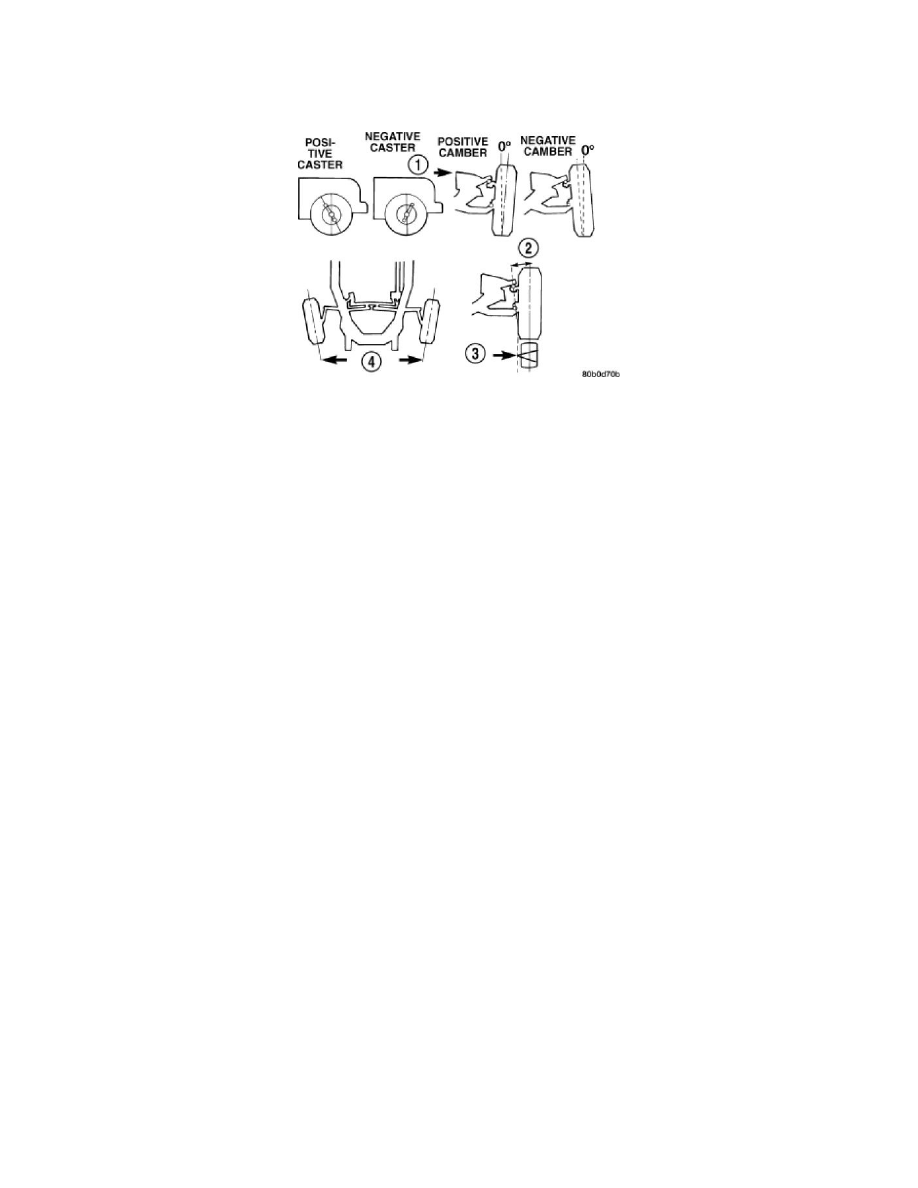Dakota 2WD V8-4.7L (2008)

Alignment: Description and Operation
Wheel Alignment - Operation
OPERATION
-
CASTER (1) is the forward or rearward tilt of the steering knuckle from vertical. Tilting the top of the knuckle forward provides less positive
caster. Tilting the top of the knuckle rearward provides more positive caster. Positive caster promotes directional stability. This angle enables the
front wheels to return to a straight ahead position after turns.
-
CAMBER (2) is the inward or outward tilt of the wheel relative to the center of the vehicle. Tilting the top of the wheel inward provides negative
camber. Tilting the top of the wheel outward provides positive camber. Incorrect camber will cause wear on the inside or outside edge of the tire.
-
TOE (4) is the difference between the leading inside edges and trailing inside edges of the front tires. Wheel toe position out of specification
cause's unstable steering, uneven tire wear and steering wheel off- center. The wheel toe position is the final front wheel alignment adjustment.
-
THRUST ANGLE (3) is the angle of the rear axle relative to the centerline of the vehicle. Incorrect thrust angle can cause off-center steering and
excessive tire wear. Off-center steering, lead or pull and Minimal adjustment (clearance between spring seat hole and leaf spring pin) can be made
by loosening the U-Bolts and moving one side forward and the other rearward. All damaged component(s) must be replaced to correct the thrust
angle.
